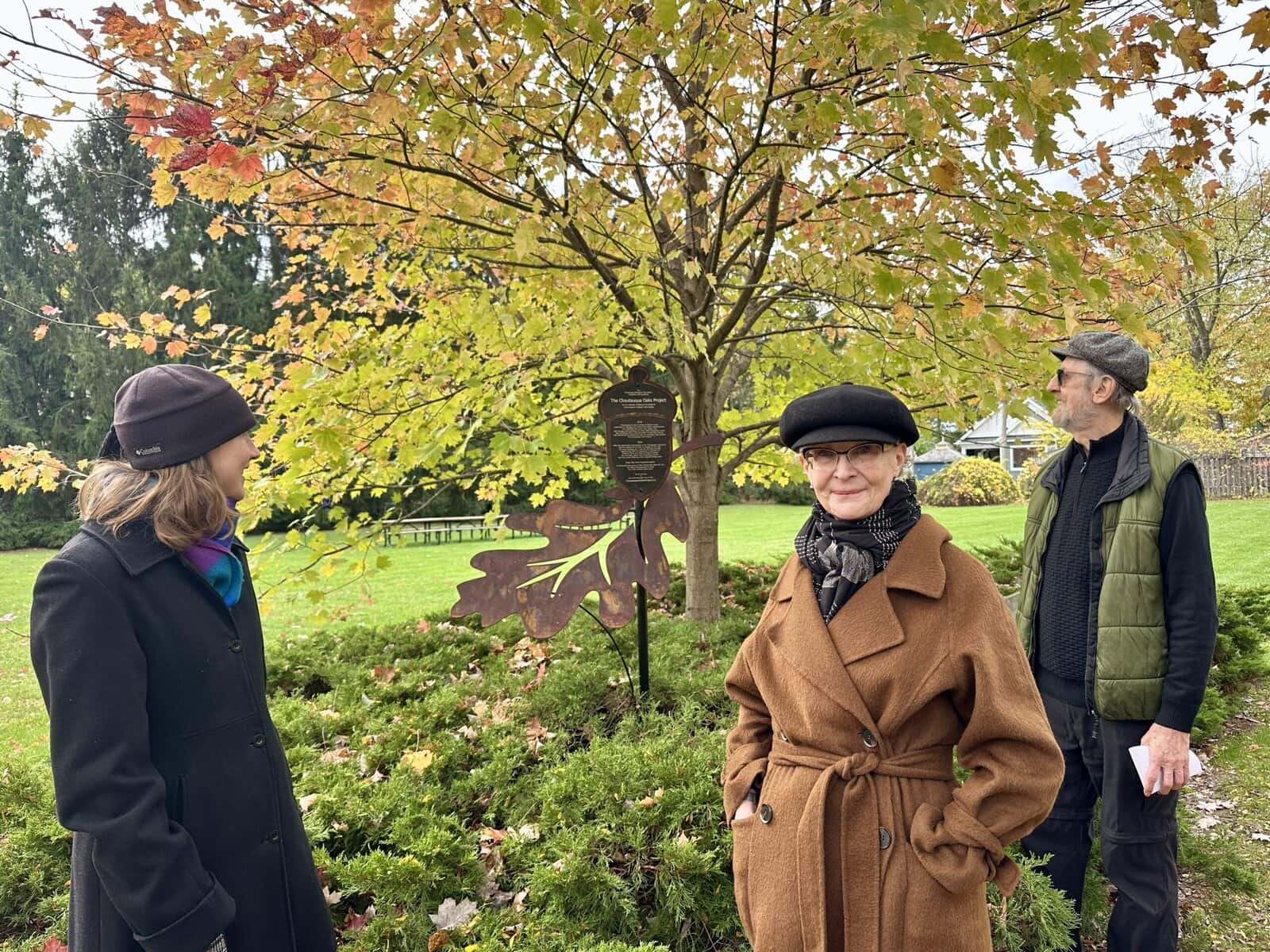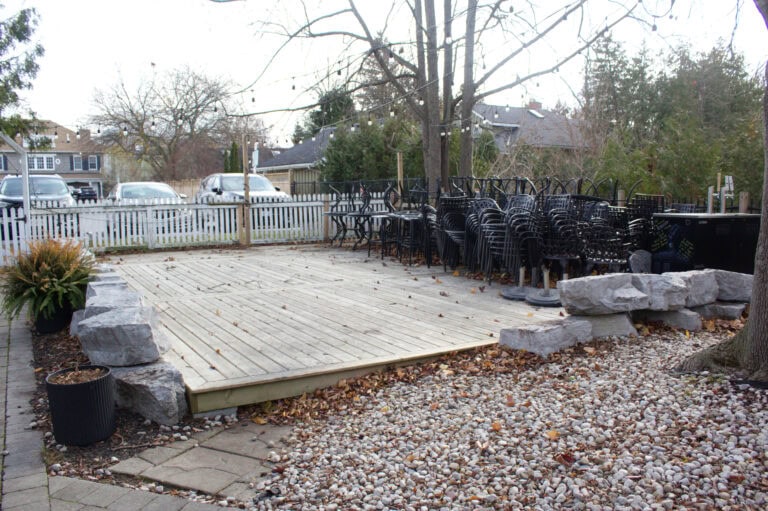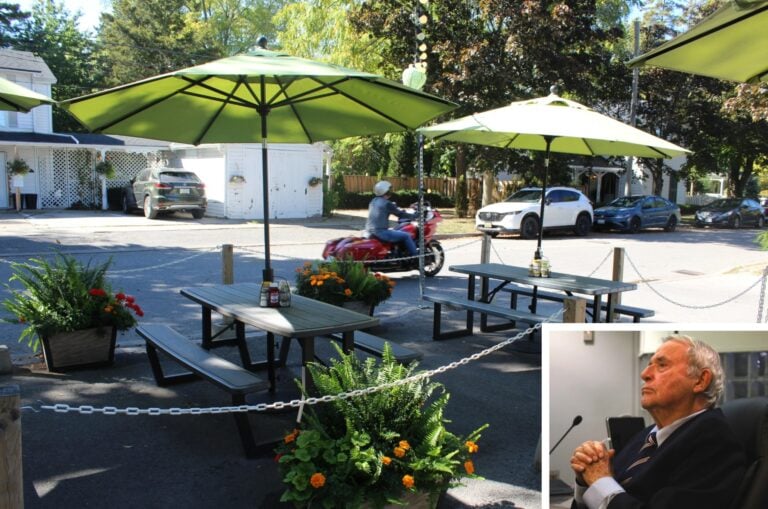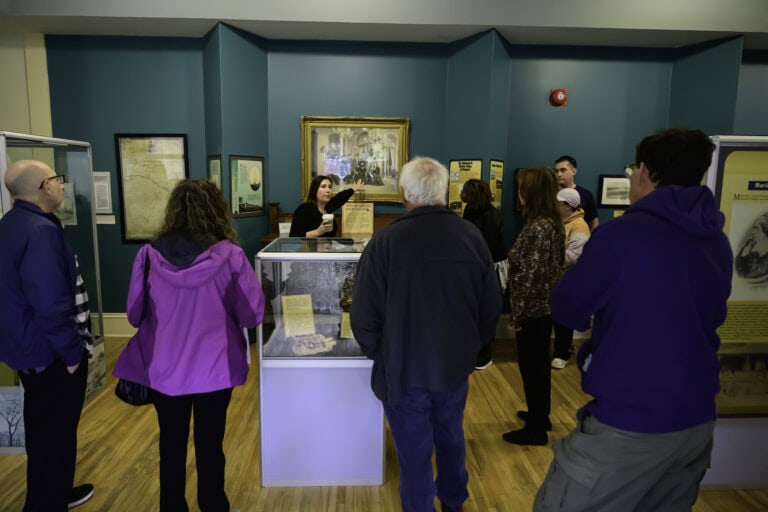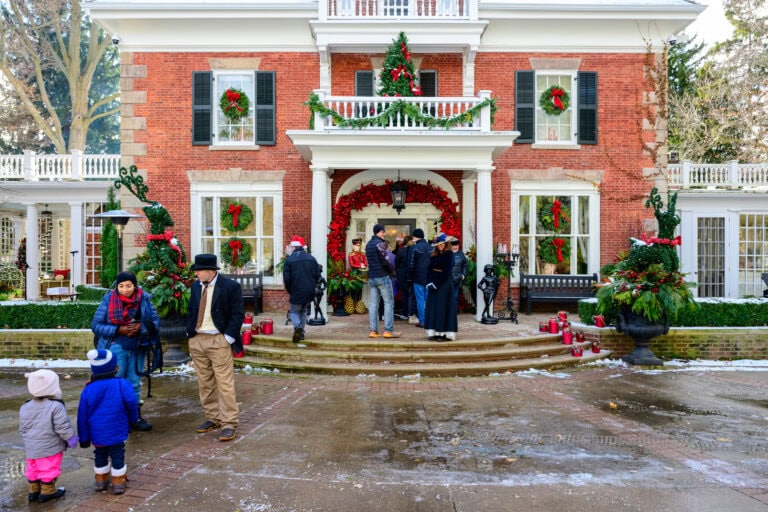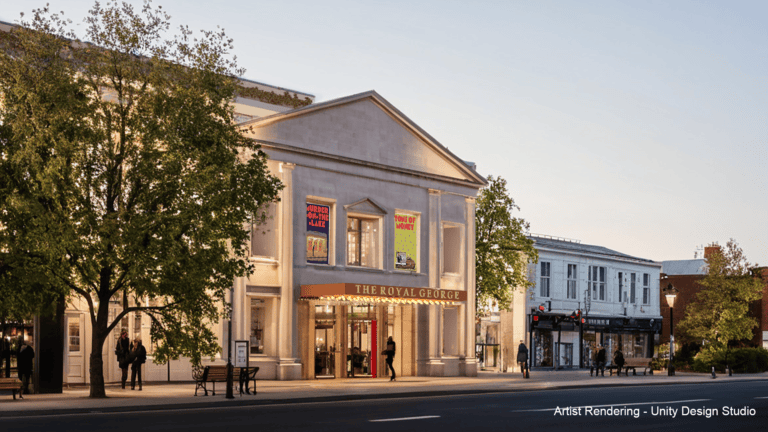In Chautauqua Park, beneath the oak canopy that inspired a neighbourhood, residents gathered Friday morning to celebrate a project built on the belief that the best time to plant a tree is now — even if you’ll never sit in its shade.
A new plaque was unveiled to honour the volunteers behind the Chautauqua Oaks Project, a seven-year effort that preserved and renewed one of Niagara-on-the-Lake’s most distinctive treescapes.
“This is spectacular. I like to call it a sculpture, not just a plaque,” Weston Miller, president of the Chautauqua Residents Association, told The Lake Report.
The project, which ran from 2016 to 2023, catalogued every tree in the neighbourhood, developed a community tree plan endorsed by the Town of NOTL, launched an educational website and oversaw the planting of more than 500 new oaks — many grown from the acorns of Chautauqua’s heritage trees.
Miller said the “community-led, community-funded” project embodies Chautauqua’s spirit of stewardship — caring not only for its trees and canopy, but for its people.
“Truly, an inspiring project and I’m glad it’s getting the recognition I think it deserves,” he said.
The community-funded steel installation, fabricated by former Shaw Festival staff member Rob Brophy, briefly outlines the project’s timeline and celebrates its community roots — a reminder, Miller said, of what can happen when residents work together.
“This was a neighbourhood-wide undertaking: volunteers mapped and measured, families came out for planting days, longtime residents shared stories of the history of our tree canopy,” he told the crowd.
Leslie Frankish, the author and originator of the project plan, said “we’re just very, very, very proud,” in an interview.
In her speech, she thanked partners and supporters for helping bring the project to life and “the absolute(ly) beautiful existing Chautauqua Oaks for the joy that they give us and all the glorious acorns.”
Her acknowledgments also included former Lord Mayor Betty Disero, “for championing our endeavor and establishing an enviable, positive and productive relationship with the town,” Niagara College horticulture professor Mary Jane Clark, “for her personal attention and awe-inspiring dedication that resulted in an entire forest of oaks being grown from our acorns,” and more.
Before making way for a few words from Holmes Hooke — one of the project’s co-ordinators who, Miller said, “galvanized community participation and cared for the trees” — Frankish took a moment to add that “one could not ask for a more pleasant stalwart and loyal colleague.”
Hooke thanked those who mapped, dug, watered and welcomed trees into their gardens.
“But I must say, we would not be here thanking these people today without the vision, the endless creativity and the dogged determination of one remarkable person, Leslie Frankish,” he said.
“It has been an honour and a privilege to be by your side throughout this adventure — thank you,” he added.
Miller said children were also involved in the process and learned how to water a sapling.
“And maybe, for the first time, felt what it means to care for something that will long outlive us all,” he said.
“That is the very definition of community, in my opinion — choosing the long view together.”



